Peas for Baby-Led Weaning
Learn how to serve peas for baby-led weaning with our helpful guide. A powerful little veggie, peas are full of essential nutrients and fiber. They’re perfect for boosting immune function and supporting healthy development in babies and toddlers.

Medically reviewed and cowritten by Jamie Johnson, Registered Dietitian Nutritionist (RDN), and Lauren Braaten, Pediatric Occupational Therapist (OT).
Peas for Baby
There was a reason your mom always wanted you to eat your peas growing up – though they’re little in size, peas are nutritional powerhouses when it comes to their health benefits. Peas are a good source of protein, antioxidants, and vitamins and minerals such as C, K, iron, folate and manganese. Plus, peas are high in fiber, so they’ll help your little one with healthy digestion.
However, you may have heard that peas can be a choking hazard – or maybe you’re just wondering if your little one is ready to eat peas? Or how to serve peas for baby-led weaning?
In this guide, we’ll answer those questions and cover all the information you need in order to serve peas for baby-led weaning. Learn about the benefits of peas for baby, FAQs, helpful tools and expert feeding tips.
First time making homemade baby food? Then, I would suggest that you start by reading my very in-depth Complete Guide to Baby-Led Weaning – which covers what exactly is baby-led weaning, to every parent’s concern of baby-led weaning and choking, this guide goes over it all. I will also share how to know when baby is ready for BLW, the top 10 best first foods, a helpful sample blw feeding schedule, helpful tools to have on hand, and much much more!
You can also check out my best-selling cookbook for even more information and recipes!

Reasons to Love Peas for BLW
- Delicious baby food purees – 6+ months
- Great for baby-led weaning – 6+ months
- Also great for the finger food stage – 9+ months
- Full of essential nutrients for baby
- Different ways for baby to eat – spoon-fed or self-feed
- Easy to make – minimal prep work required
Health Benefits of Peas for Baby
There are so many health benefits of serving peas to baby, it’s hard to talk about them all, but here are a few highlights:
- Peas are high in fiber, which helps keep up a healthy digestive system. One cup provides about 30% of your daily needs.
- Peas are actually one of the few vegetables that are a good source of protein with is essential for growth and development and keeping bellies full.
- For a veggie, peas are a good source of iron, which is very important for babies after around 6 months to help prevent iron deficiency anemia. They’re also high in vitamin C, which helps with iron absorption, making them an excellent choice for babies!
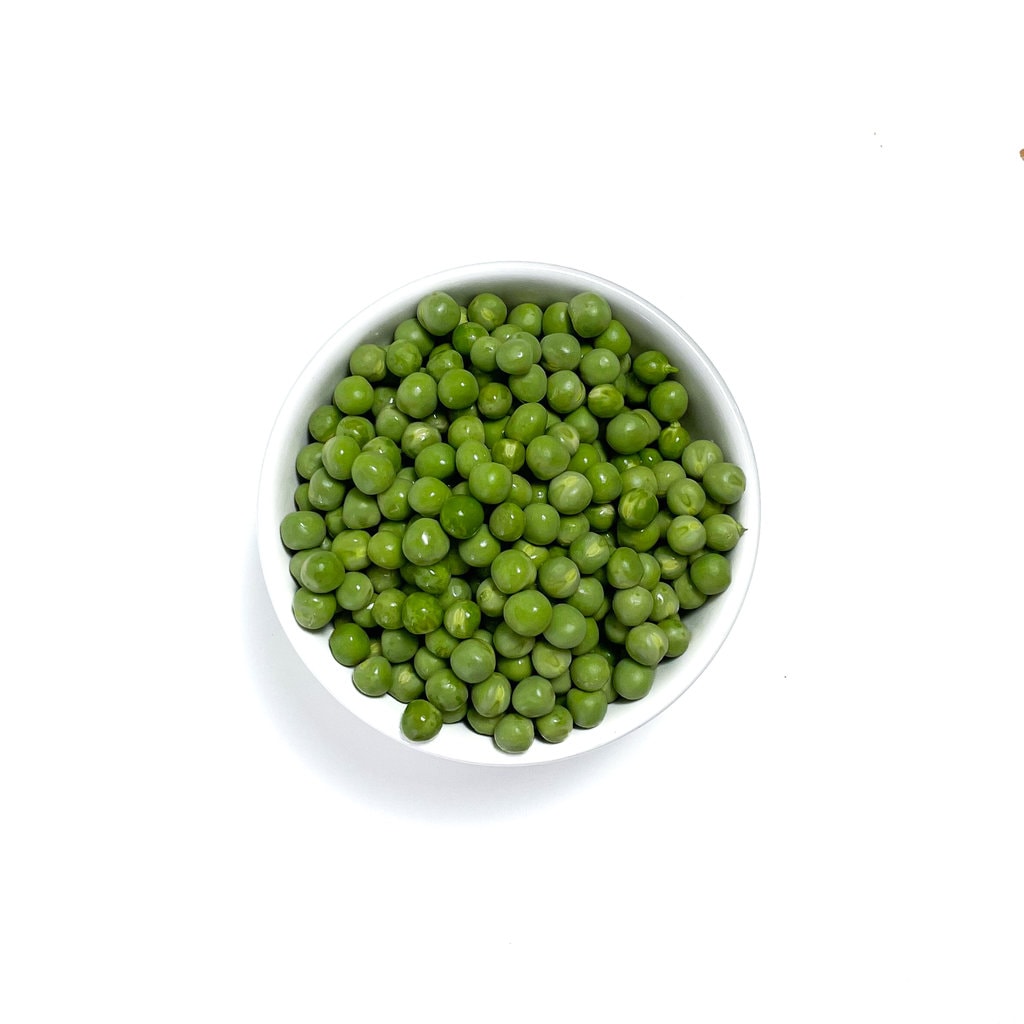
Spices to Add
Adding spices to your baby’s foods is a great way to introduce more complex flavors at an early age. In particular, adding a little bit of mint, rosemary, thyme or black pepper will bring out that fresh taste in peas.
Frequently Asked Questions
No, just the opposite in fact. Because peas are high in fiber, they can help keep the digestive system regular and help prevent constipation.
No, peas are not a common allergen, although allergies have been reported. As with any food, start with a small portion and be aware of any signs that might be an allergic reaction after introducing it.
They certainly can be since they have a round shape, making them more prone to getting stuck in baby’s airway. Mash or puree peas, and thaw frozen peas, before serving them to baby until you are confident your child can handle them. Always supervise your child while eating to reduce the risk of choking.
How to Prepare Peas for Baby-Led Weaning
There are several different ways to prepare fresh or frozen peas for your baby. Here are some of our favorite ways:
Sautéed
Heat a tablespoon or butter or oil over medium to high heat. Add about 2 cups of peas. Stir them around, still over medium-high heat, until they’re heated through and tender, about 3-5 minutes.
Steamed
Bring 2 inches of water to boil in a large saucepan with a steamer basket. Add peas to basket and cover and steam until tender, about 2-4 minutes.
Boiled
In a saucepan, combine 2 cups of peas with about ½ cup water. Bring the liquid to a boil with the lid off. Reduce heat, cover, and let your peas simmer for 3-5 minutes, or until tender.
Pea Puree: You can offer purees and still allow your baby to lead the way with self-feeding by offering the puree on a self-feeding spoon, by placing a few spoonfuls of the puree directly on the tray or in a bowl for your baby to dip their fingers into, or you can even use the puree as a dip for solid foods such a banana or piece of toast.
Helpful Tools
Here are some products that help you make and serve peas to your baby even easier! To find even more products that I love, make sure to check out my online shop.
- Highchair
- Saucepans
- Steamer Insert with lid
- Easy to hold fork and spoon
- GOOtensils
- Bowl or Sectioned plate
- Open lid cup
- Bib with catch pocket
- Sleeved bib
- Splat mat to cover the floor
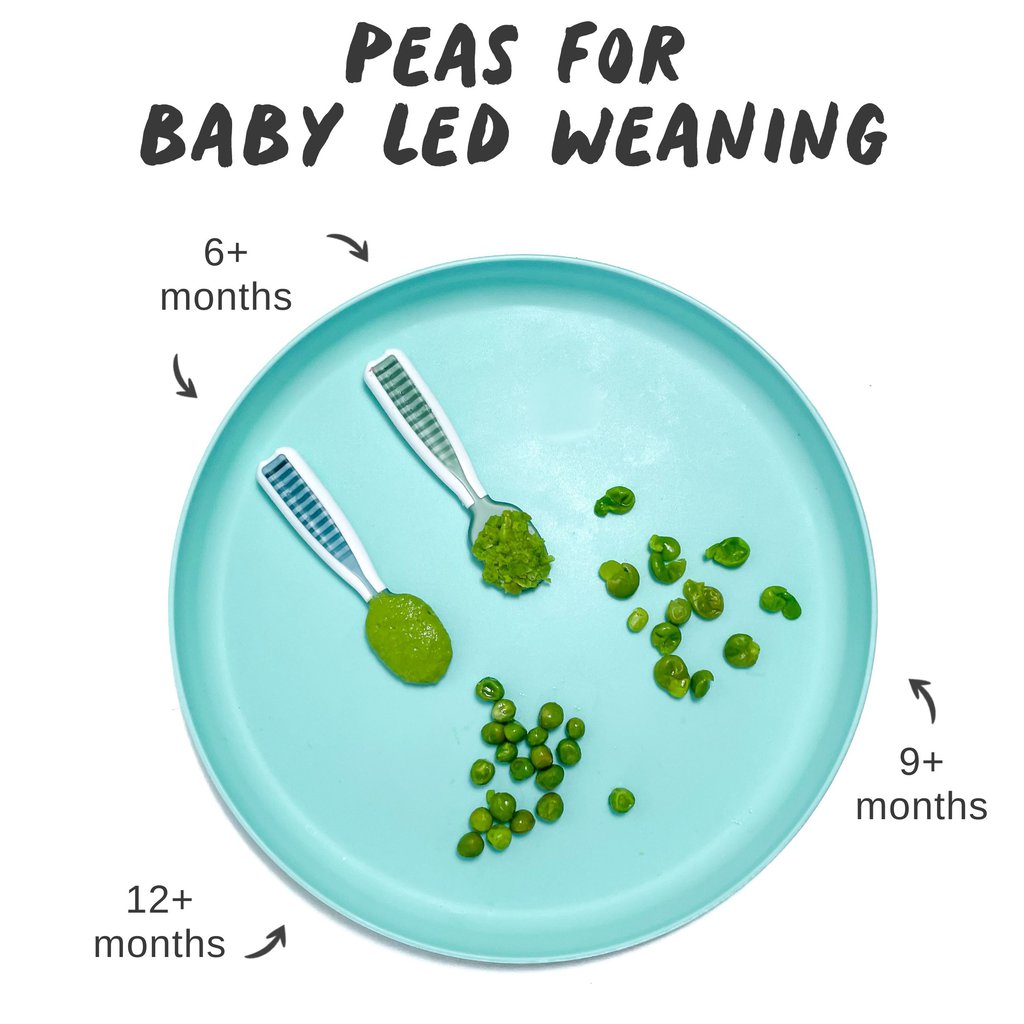
How to Serve Peas for Baby-Led Weaning
Peas can be a choking hazard for your baby, regardless of whether you are doing baby-led weaning starting at 6 months or during the finger foods stage at 9 months, so it is important to cook and serve them properly.
- 6+ months – Mashed or Pureed on Self-Feeding Spoon: Mashed peas have a thicker consistency so will be easy to stick to a self-feeding spoon. Or you can let your baby just dive their hands right in and scoop them up that way.
- 9+ months – Flattened: At 9 months, the pincer grasp is newly developing so flattened peas can give your baby some practice with it.
- 12+ months – Whole: By 12 months, babies will likely be able to handle eating whole peas, and be able to pick them up with a more developed pincer grasp.
Foods to Pair with Peas
Peas can be paired with just about anything for a well-rounded meal. But since most veggies are lacking in protein, including another protein source will help your baby’s tummy feel full and satisfied. And because peas are a great source of vitamin C, which helps with iron absorption, try serving them with other foods high in iron to maximize the iron that your baby gets. Additionally, babies need fat for brain development, so pair it with a fat source, which will also help your baby absorb the vitamins found in peas.
- Proteins: chicken, beef, fish, shellfish, pork, turkey, yogurt, beans, tofu, quinoa, lentils, eggs
- Iron foods: chicken, beef, fish, shellfish, pork, turkey, beans, tofu, spinach, peas, chickpeas, quinoa, strawberries, enriched bread and pasta, whole wheat bread and pasta, oats, brown rice, whole grain bread, broccoli
- Fats: Full fat yogurt, whole milk, full fat kefir, avocados, olive oil, butter, egg yolks, salmon, nut butters
Storage
You can store cooked peas in an air-tight container in the fridge for up to 4 days.
More Favorite Pea Recipes
Easy-Peasy 5 Veggie Pasta for Baby
Green Pea Hummus for Baby + Toddler
Fennel, Peach + Pea Baby Food Puree
Baby-Led Weaning Feeding Tips
- Frozen peas are great to have on hand. They whip up in a flash on the stove or in the microwave and make a great addition to almost any savory dish.
- If buying canned peas, make sure to grab the “no salt added” cans to avoid too much sodium.
- Peas can be a choking hazard due to their small, round size, so minimize the risk by smashing peas into a puree or flatten with the back of a fork or your fingers before serving.
- When serving flattened or whole peas, consider placing them directly on your baby’s highchair tray or table, instead of a bowl. This will encourage your baby to slow down when eating and avoid overstuffing their mouth with too many peas at one time.
- Pureed peas can be spread on strips of toast, teething biscuits or on their own for hand-scooping.

Get the recipe: Peas for Baby-Led Weaning
Ingredients
- 1/2 cup peas fresh or frozen
Instructions
- In a medium saucepan, bring 2 inches of water to a boil. Add peas to a steamer basket and place in the saucepan. Cover.
- Steam for 4-6 minutes or until tender. Let cool.
- Flatten with the back of a fork, mash and serve in an age-appropriate way.
Notes
- 6+ months – Mashed or Pureed on Self-Feeding Spoon: Mashed peas have a thicker consistency so will be easy to stick to a self-feeding spoon. Or you can let your baby just dive their hands right in and scoop them up that way.
- 9+ months – Flattened: At 9 months, the pincer grasp is newly developing so flattened peas can give your baby some practice with it.
- 12+ months – Whole: By 12 months, babies will likely be able to handle eating whole peas, and be able to pick them up with a more developed pincer grasp.
Did you make this recipe?
Tag @babyfoode on Instagram and hashtag it #babyfoode!

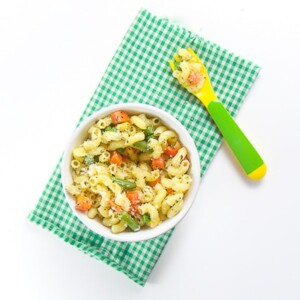
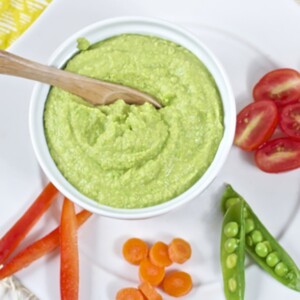
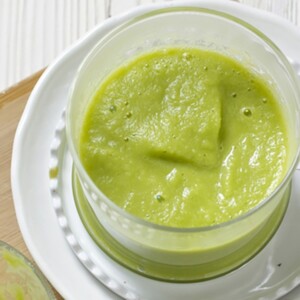
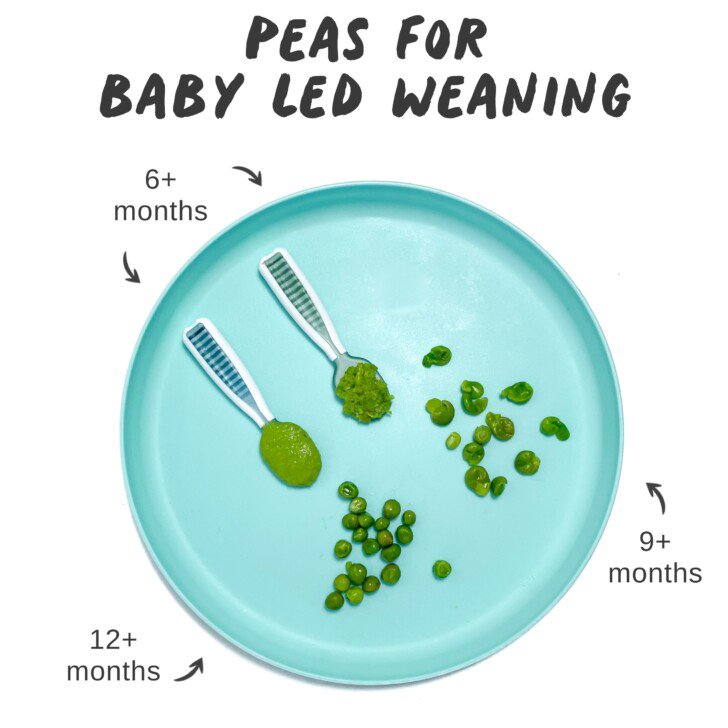

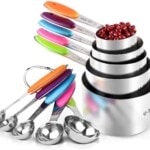
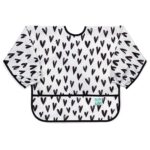

2 Comments on “Peas for Baby-Led Weaning”
My purée came out so chunky because of the skin of the peas. What did I do wrong? This happened to my green beans too.
Hi Kaitlyn! Boiled greens will suck up the water around it as well as break down the fiber, so you may get an inconsistent puree if you boil the green beans. You can sauté the green beans for 6-8 minutes in a little olive oil and then puree. Same for the peas. Happy holidays! xo, Michele